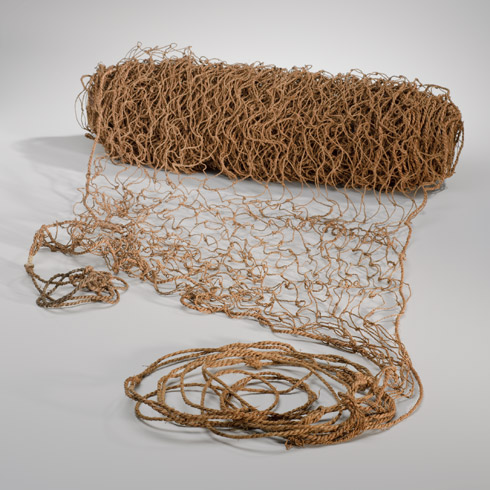About the Artifact

© Canadian Museum of Civilization, VI-I- 16, Photo Marie-Louise Deruaz, IMG2010-0112-0005-Dm
“In the old days, fish nets were made from the inner bark of the willow. The preparation of this cordage was a tedious process, and much of the work had to be done with the hands under water to keep the fibre moist and flexible. The bark was best when gathered in summer. The threads were rolled on the naked thigh, and experts could make them quite long. If gathered too late in the season, the fibre was brittle. A net would easily last a year and sometimes more.”
— Douglas Leechman, 1954
“Fishing is done in the creeks or small river[s]. Nets and spears are used in catching fish. To make a net, first of all, a large amount of willow bark is gathered. The bark is carefully removed from the willow then cut in thin, long strips and then placed in hot boiling water. After it ha[s] been in the water for some time, it is removed and twisted. The bark is twisted around and around and then brought together with another piece of bark. This then becomes a strong little piece of rope. After producing enough small ropes, the ropes are then fastened together and knitted into a net.”
— Paul Bonnetplume, Teetł’it Gwich’in Elder, 1974 (“Hunting and Fishing in the Fall”)